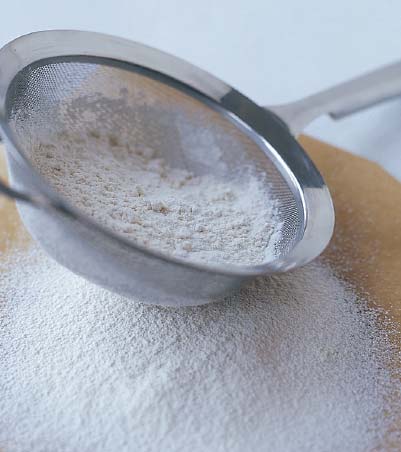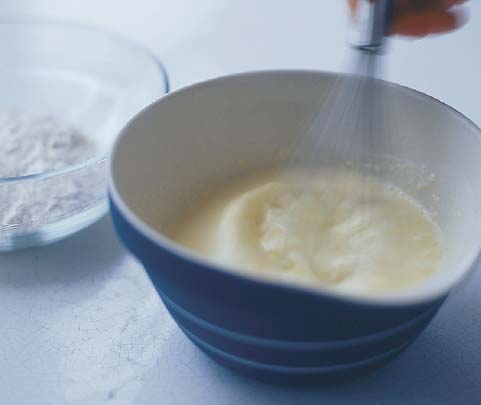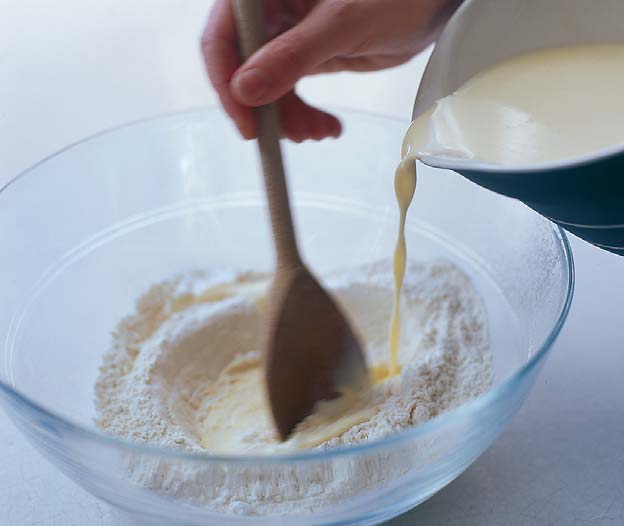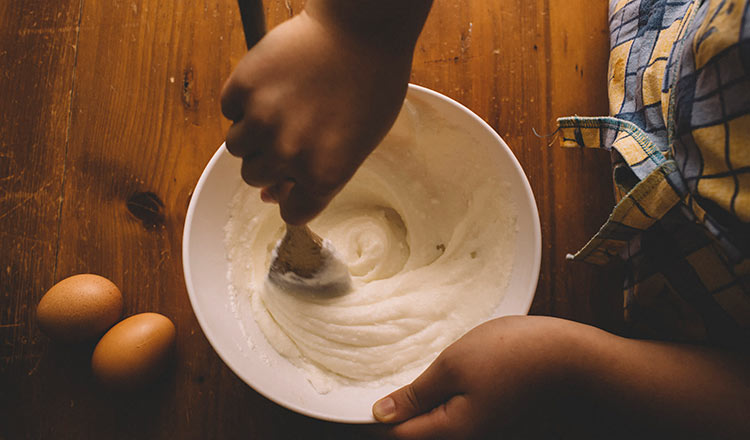The blending method, sometimes called the straight method, is the most basic and straight-forward mixing method, used for mixing quick breads and simple cakes. The blending method consists of making two mixtures, one with the wet ingredients and one with the dry, then combining (or blending!) the two together.
1. Combining the Dry Ingredients

The dry ingredients—such as flour, salt, and baking powder or soda—are evenly blended by either sifting or whisking them together.
2. Combining the Wet Ingredients

Wet ingredients commonly include milk, buttermilk, cream, water, fruit juice, oil, and melted butter. Eggs are also considered a liquid. All of these ingredients should be properly measured and, when necessary, warmed enough to blend easily with the other wet ingredients. Batters blend most evenly when the liquid ingredients are all close to room temperature. Use a whisk or a table fork to blend the wet ingredients together until they are smooth.
3. Combining the Dry and Wet Ingredients

Most batters made with the straight mixing method are best mixed by hand. They are usually not heavy enough to make stirring difficult, and a short mixing time produces the most tender baked goods. Combine the wet and the dry ingredients all at once. Use a wooden spoon or a spatula to stir and fold the batter until the dry ingredients are evenly moistened. For some batters, such as pancake batter, the presence of a few small lumps in the batter is acceptable. As soon as the batter is mixed, transfer it to prepared pans and bake at once (unless a recipe directs otherwise). If the batter sits for too long after mixing, the chemical leaveners can lose their leavening power.


